Data acquisition software, also known as DAQ software, is a crucial tool for collecting, analyzing, and recording data from sensors, instruments, and devices. It is widely used in scientific research, industrial automation, and engineering fields, enabling real-time data capture and processing. The software facilitates data collection from various sources, provides monitoring capabilities, offers signal conditioning options, supports data logging, and may include control and automation features. Numerous data acquisition software packages are available in the market, offering a range of functionalities and compatibility with different operating systems.
Data acquisition software plays a pivotal role in efficient data collection, enabling informed decision-making and providing competitive advantages. By effectively capturing and leveraging data, organizations can drive innovation, optimize processes, and achieve success. The future of data acquisition holds immense potential, with emerging technologies and trends shaping its evolution. Embracing the power of data acquisition allows organizations to unlock the full potential of data and create a sustainable future.
Key Takeaways:
- Data acquisition software is essential for collecting, analyzing, and recording data from various sources.
- It enables real-time data capture, monitoring, signal conditioning, data logging, and may include control and automation features.
- There are numerous data acquisition software packages available in the market, offering different functionalities and compatibility with various operating systems.
- Data acquisition software leads to efficient data collection, informed decision-making, and competitive advantages for organizations.
- The future of data acquisition is promising, with emerging technologies and trends driving its evolution.
The Key Functions of Data Acquisition Software
Data acquisition software performs several key functions that are essential for effective data collection, analysis, and management. These functions enable organizations to harness the power of data and make informed decisions. Let’s explore the key functions of data acquisition software:
- Data Collection: Data acquisition software enables the collection of data from various sources, including sensors, probes, and cameras. It can capture data in different formats such as analog signals or digital inputs/outputs.
- Real-Time Monitoring: With data acquisition software, users can monitor systems in real-time. This capability allows for the observation of system behavior, detection of anomalies or trends, and timely decision-making.
- Signal Conditioning: To ensure accurate and reliable data, data acquisition software offers signal conditioning options. These options enhance the quality of acquired data by mitigating noise, amplifying signals, and filtering unwanted disturbances.
- Data Logging: Data acquisition software includes data logging features, which enable the recording of data in structured formats. This recorded data can later be analyzed, visualized, and utilized for various purposes, such as performance evaluation or compliance reporting.
- Control and Automation: Some data acquisition software packages offer control and automation functionalities. This allows users to interact with connected devices, execute actions based on acquired data, and automate processes for enhanced productivity.
- Integration and Compatibility: Data acquisition software can seamlessly integrate with external systems, devices, and software tools. This compatibility ensures smooth data exchange and enables organizations to leverage their existing infrastructure.
Data acquisition software plays a pivotal role in enabling efficient data collection, real-time monitoring, accurate signal conditioning, structured data logging, and control automation. Its integration and compatibility features make it a versatile tool for organizations across industries.
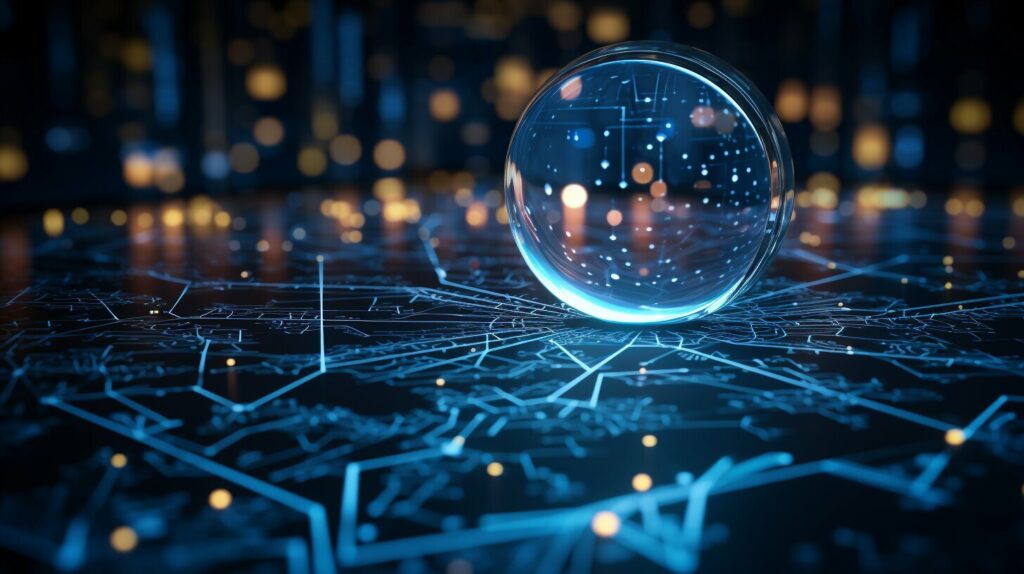
Popular Data Acquisition Software Packages
When it comes to data acquisition software, there are several popular packages available in the market. These software solutions offer a wide range of functionalities and are designed to cater to different industries and applications. Let’s take a closer look at some of the top data acquisition software packages:
DewesoftX
DewesoftX is a powerful data acquisition and analysis software developed by Dewesoft, a leading provider of measurement and test solutions. This software is widely used in industries such as automotive, aerospace, energy, and research. DewesoftX offers comprehensive functionality for data acquisition, visualization, analysis, and reporting. It supports Dewesoft data acquisition hardware devices and provides flexibility and compatibility with various sensor technologies. With its intuitive interface, real-time visualization capabilities, and advanced signal processing options, DewesoftX is a popular choice among professionals in the field.
LabView
LabView, developed by National Instruments, is a versatile software platform for data acquisition, instrument control, and industrial automation. It utilizes a graphical programming language called G to create virtual instruments and applications for measurement and control systems. LabView offers compatibility with a wide range of hardware devices, extensive libraries and drivers, and powerful tools for data acquisition, analysis, and visualization. Its multi-platform development capability allows applications to run on different operating systems and deploy to various hardware targets, making it a preferred choice for many engineers and researchers.
DIAdem, TestStand, OXYGEN, and More
In addition to DewesoftX and LabView, there are several other popular data acquisition software packages available. These include DIAdem, TestStand, OXYGEN, Catman, Matlab, FlexPro, imc STUDIO, imc FAMOS, imc Wave, Simcenter Testlab, SIGVIEW, NVGate, and enDAQ LAB. Each of these software solutions is developed by reputable manufacturers and offers unique features and strengths. They are widely used in various industries and applications, providing professionals with the tools they need to effectively acquire and analyze data.
With the availability of these popular data acquisition software packages, professionals have a wide range of options to choose from based on their specific requirements and industry needs. Whether it’s comprehensive functionality, compatibility with specific hardware devices, or advanced analysis capabilities, there is a software package available to help meet the data acquisition needs of different industries and applications.
DewesoftX: A Powerful Data Acquisition and Analysis Software
DewesoftX is a powerful data acquisition and analysis software developed by Dewesoft, a leading provider of measurement and test solutions. With its advanced capabilities and user-friendly interface, DewesoftX is widely used in industries such as automotive, aerospace, energy, and research.
As a comprehensive data acquisition software, DewesoftX offers a range of functionality for data collection, visualization, analysis, and reporting. It supports Dewesoft data acquisition hardware devices and provides seamless integration with various sensor technologies.
One of the key advantages of DewesoftX is its versatility. It caters to the specific needs of different industries, allowing users to capture and analyze data in real-time. Whether it’s monitoring and analyzing vehicle performance in the automotive industry, conducting research experiments in the aerospace field, or optimizing energy consumption in power plants, DewesoftX provides the tools and features necessary for efficient data acquisition and analysis.
DewesoftX Features:
- Real-time data visualization and analysis
- Advanced signal processing options
- Flexible compatibility with various sensor technologies
- Seamless integration with Dewesoft data acquisition hardware
- Intuitive user interface for easy operation
DewesoftX empowers organizations across industries to harness the power of data and make informed decisions based on accurate and reliable information. By leveraging its advanced features and capabilities, businesses can gain a competitive edge, drive innovation, and optimize their operations.
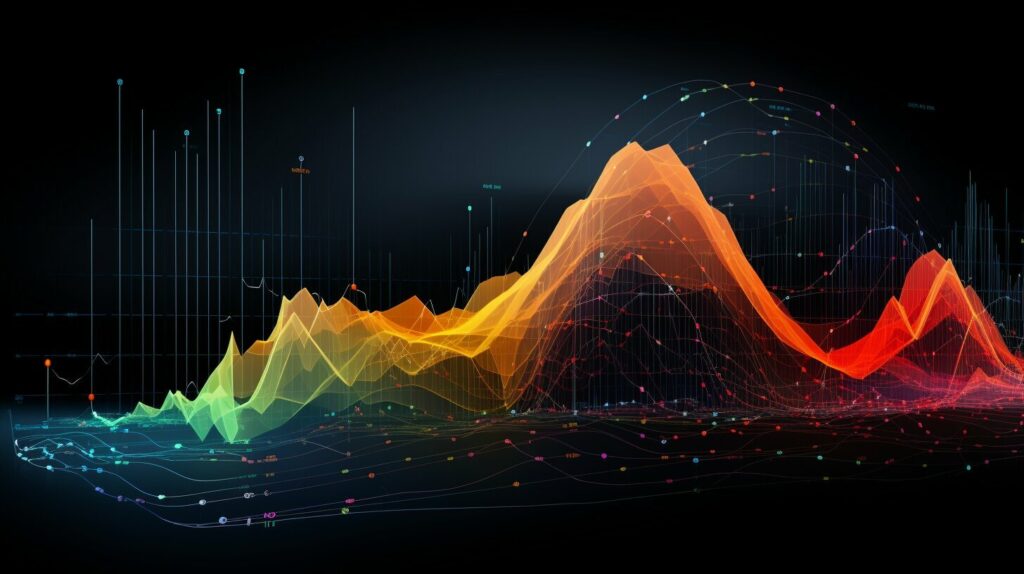
| Industry | Application |
|---|---|
| Automotive | Vehicle performance testing and analysis |
| Aerospace | Flight data recording and analysis |
| Energy | Power plant monitoring and optimization |
| Research | Experimental data acquisition and analysis |
LabView: A Versatile Software Platform for Data Acquisition
LabView is a versatile software platform developed by National Instruments for data acquisition, instrument control, and industrial automation. With its graphical programming language called G, LabView allows users to create virtual instruments and applications for measurement and control systems. This powerful software offers extensive compatibility with a wide range of hardware devices, making it a popular choice in various industries.
One of the key advantages of LabView is its flexibility and adaptability to different environments. Whether you’re working in automotive, aerospace, research, or any other industry, LabView provides the tools and capabilities needed for efficient data acquisition. Its graphical programming interface simplifies the development process, enabling users to visually design applications and easily integrate with hardware components.
In addition to its instrument control and data acquisition capabilities, LabView offers powerful tools for data analysis and visualization. With built-in libraries, drivers, and signal processing functions, LabView empowers users to gain meaningful insights from acquired data. The platform supports multi-platform development, allowing applications to run on different operating systems and deploy to various hardware targets.
LabView Features:
- Graphical programming language for easy application development
- Compatibility with a wide range of hardware devices
- Extensive libraries, drivers, and signal processing functions
- Data acquisition, analysis, and visualization capabilities
- Multi-platform development for flexibility
“LabView is a versatile software platform that enables efficient data acquisition, instrument control, and industrial automation. With its graphical programming language and extensive compatibility with hardware devices, LabView provides the tools necessary for seamless integration and effective data management.”
LabView is trusted by professionals across industries for its robustness, reliability, and ease of use. Its wide range of features and compatibility make it a preferred choice for applications requiring data acquisition and analysis. Whether you’re conducting scientific research, developing automation solutions, or monitoring industrial processes, LabView offers the flexibility and functionality needed to streamline your data acquisition workflow.
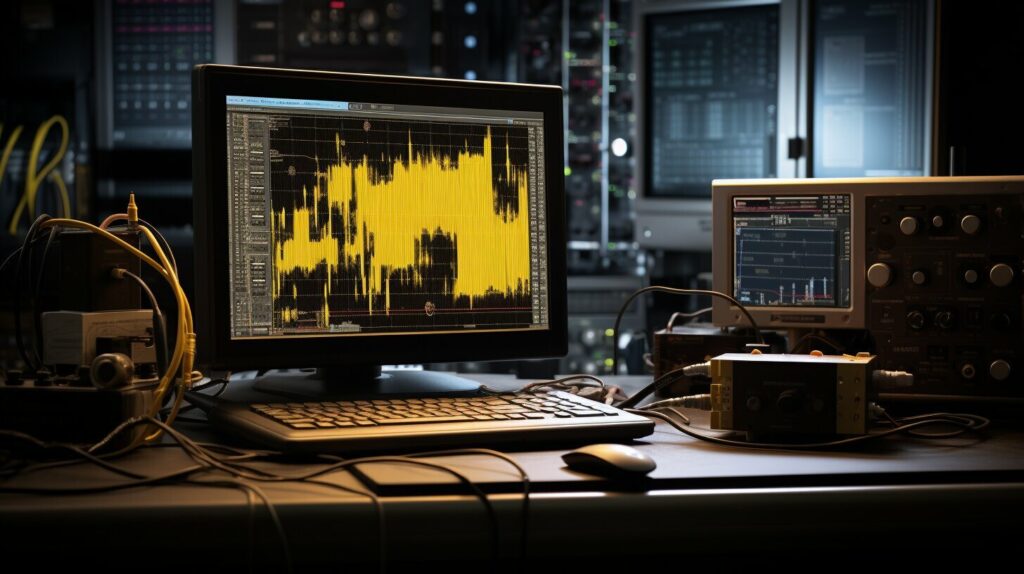
Data Acquisition Techniques and Tools
Data acquisition involves a range of techniques and tools that are instrumental in the systematic collection and conversion of data into a digital format. These techniques rely on sensors, devices, and instruments tailored to specific requirements. One notable tool in the field of data acquisition is the LabJack T8. Known for its precision and flexibility, the LabJack T8 is a versatile data acquisition device that offers reliable and accurate data collection capabilities.
To further enhance the data acquisition process, various software and platforms are available. These software solutions provide functionalities such as data logging, visualization, and analysis, simplifying the management and interpretation of acquired data. With the help of data acquisition software, organizations can efficiently handle and utilize large volumes of data, ultimately leading to better decision-making and improved operational efficiency.
“Data acquisition involves a range of techniques and tools that are instrumental in the systematic collection and conversion of data into a digital format.”
When it comes to selecting the right data acquisition tool, it is essential to consider factors such as compatibility, ease of use, and reliability. The LabJack T8, coupled with appropriate data acquisition software, can provide organizations with a comprehensive solution for their data acquisition needs. Furthermore, data acquisition techniques and tools continue to evolve, driven by advancements in technology, enabling more efficient and accurate data collection processes.
Data Acquisition Techniques
There are various techniques used in data acquisition, depending on the nature of the data and the specific requirements of the application. Some common data acquisition techniques include:
- Direct data acquisition: In this technique, data is acquired directly from the source using sensors or transducers.
- Indirect data acquisition: This technique involves acquiring data from secondary sources, such as databases or other data repositories.
- Real-time data acquisition: Real-time data acquisition allows for immediate data capture and processing, enabling quick decision-making based on up-to-date information.
- Batch data acquisition: With batch data acquisition, data is collected and processed in batches, often at scheduled intervals.
Data Acquisition Tools
In addition to sensors and devices, there are various data acquisition tools available in the market to facilitate the data collection process. These tools provide features such as data logging, signal conditioning, and visualization. Some commonly used data acquisition tools include:
- LabJack T8: The LabJack T8 is a versatile data acquisition device known for its precision and flexibility. It offers multiple analog and digital inputs and outputs, making it suitable for a wide range of applications.
- National Instruments: National Instruments offers a comprehensive range of data acquisition hardware and software solutions, including the popular LabVIEW platform.
- Keysight Technologies: Keysight Technologies provides a range of data acquisition solutions for various industries, including automotive, aerospace, and electronics manufacturing.
- ADInstruments: ADInstruments specializes in data acquisition and analysis solutions for life sciences research, offering a wide range of interfaces and software tools.
These tools, combined with suitable data acquisition techniques and software, enable organizations to effectively collect, process, and analyze data, driving informed decision-making and improving overall operational efficiency.
| Data Acquisition Technique | Description |
|---|---|
| Direct data acquisition | Data is acquired directly from the source using sensors or transducers. |
| Indirect data acquisition | Data is acquired from secondary sources, such as databases or other data repositories. |
| Real-time data acquisition | Data is captured and processed in real-time, allowing for immediate decision-making based on up-to-date information. |
| Batch data acquisition | Data is collected and processed in batches, often at scheduled intervals. |
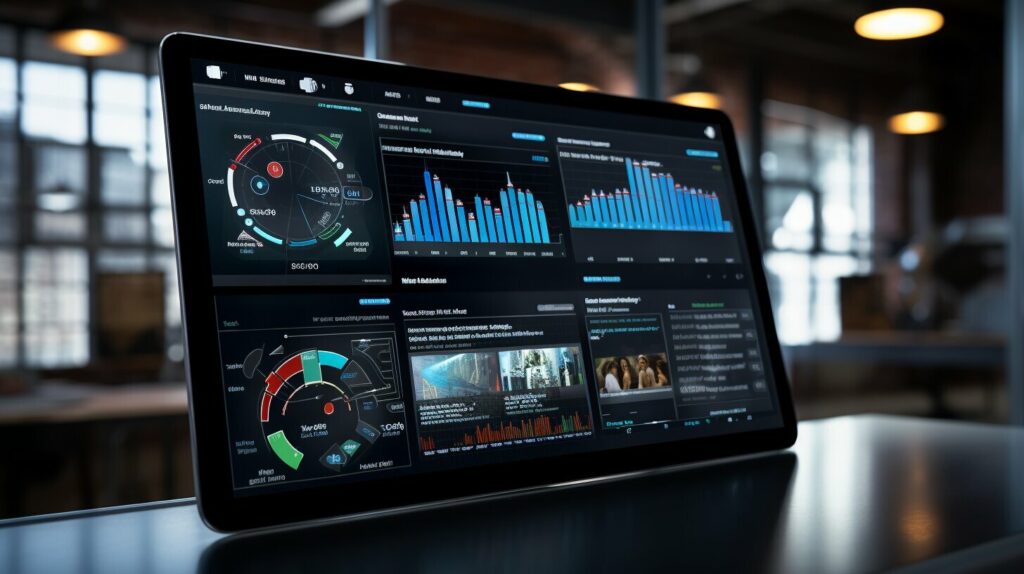
Data Acquisition in Different Industries
Data acquisition plays a vital role in various industries, enabling organizations to gather and analyze valuable data for a wide range of applications. Let’s explore some of the key industries where data acquisition is extensively utilized:
- Healthcare and Medical Research: In the healthcare sector, data acquisition is crucial for monitoring patient vital signs, conducting medical research, and analyzing diagnostic images. It enables healthcare professionals to make informed decisions, improve treatment outcomes, and enhance patient care.
- Manufacturing and Quality Control: Data acquisition is instrumental in the manufacturing industry, where it helps monitor production processes, detect defects, and optimize quality control. By collecting and analyzing real-time data, manufacturers can streamline operations, reduce waste, and ensure consistent product quality.
- Environmental Monitoring: Data acquisition is widely employed in environmental monitoring to collect data on factors such as air quality, water pollution, and climate conditions. This data is crucial for assessing environmental impact, implementing conservation measures, and developing sustainable practices.
- Scientific Research: Data acquisition is fundamental to scientific research across various disciplines. It enables researchers to collect experimental data, monitor variables, and analyze results. Whether studying physics, biology, or any other scientific field, data acquisition is essential for data-driven insights and discoveries.
These examples demonstrate how data acquisition plays a pivotal role in different industries, helping organizations enhance their operations, make informed decisions, and drive innovation. By leveraging the power of data acquisition, businesses can gain a competitive edge and contribute to their respective fields.

Data Acquisition in the Healthcare Industry
In the healthcare industry, data acquisition plays a critical role in monitoring patient health, diagnosing conditions, and improving treatment outcomes. Healthcare professionals rely on data acquisition tools and technologies to collect and analyze data from various sources, including medical devices, patient monitoring systems, and electronic health records.
“Data acquisition in healthcare enables doctors and researchers to track patient vital signs, monitor medication effectiveness, and identify trends or patterns that can inform medical interventions.”
Through data acquisition, healthcare providers can monitor patients remotely, analyze real-time data, and make accurate diagnoses. The insights gained from data acquisition enhance patient care, enable personalized treatment plans, and contribute to advancements in medical research.
Data Acquisition in Manufacturing and Quality Control
The manufacturing industry relies on data acquisition to optimize production processes, ensure product quality, and streamline operations. Data acquisition systems collect data from sensors, machines, and other sources to provide real-time insights into production performance.
“By implementing data acquisition in manufacturing, companies can identify bottlenecks, detect defects, and make data-driven decisions to improve efficiency and quality.”
Data acquisition enables manufacturers to monitor key parameters such as temperature, pressure, and vibration, helping to prevent equipment failure and reduce downtime. It also facilitates quality control measures, ensuring that products meet stringent standards and customer requirements.
Data Acquisition in Environmental Monitoring
Data acquisition plays a pivotal role in environmental monitoring, enabling the collection and analysis of data related to various environmental factors. This data helps scientists and environmentalists gain insights into the state of ecosystems, identify trends, and make informed decisions to protect the environment.
“By employing data acquisition in environmental monitoring, researchers can track climate change, analyze pollution levels, and develop strategies to mitigate environmental impact.”
Data acquisition systems capture data from sensors deployed in ecosystems, providing valuable information on air quality, water conditions, and biodiversity. This data aids in the formulation of policies and practices that protect the environment and ensure a sustainable future.
Challenges and Considerations in Data Acquisition
Data acquisition is a complex process that involves several challenges and considerations. Ensuring data accuracy, integrity, and reliability is paramount for effective decision-making and analysis. Technical challenges, such as sensor calibration, data synchronization, and data transmission, also need to be addressed for robust data acquisition systems. Additionally, data security and privacy concerns must be carefully managed to protect sensitive information and comply with regulations.
Data Accuracy, Integrity, and Reliability: Achieving accurate and reliable data is essential for making informed decisions and drawing meaningful insights. Factors such as sensor calibration, environmental conditions, and signal interference can impact data accuracy and integrity. Implementing rigorous quality control measures, calibration protocols, and data validation techniques are crucial to mitigate these challenges and ensure high-quality data acquisition.
Technical Challenges: Calibration of sensors and instruments is a critical aspect of data acquisition. Calibrating sensors regularly helps maintain accuracy and consistency in data measurements. Additionally, synchronizing data from multiple sources, such as different sensors or devices, poses technical challenges. It is important to ensure accurate data synchronization to avoid discrepancies and errors in data analysis.
Data Transmission and Security: Data acquisition systems often involve transmitting data from remote locations to central databases or analysis platforms. Ensuring secure and reliable data transmission is essential to protect against data loss, unauthorized access, or tampering. Encryption protocols, secure networks, and robust data transfer mechanisms should be implemented to safeguard data during transmission and storage.
Data Security and Privacy Concerns
Data security and privacy are critical considerations in data acquisition processes. As organizations collect and store data, protecting sensitive information and complying with privacy regulations becomes crucial. Safeguarding data against unauthorized access, maintaining data privacy, and ensuring user consent are essential for building trust with stakeholders and customers.
“Data security and privacy are paramount in today’s digital landscape. Organizations must adopt robust measures to protect sensitive information and comply with privacy regulations. By implementing secure data acquisition systems and adhering to ethical data handling practices, businesses can safeguard data and maintain trust with their stakeholders.”
Conclusion: Data acquisition presents several challenges that require careful consideration and implementation of appropriate measures. Ensuring data accuracy, integrity, and reliability is crucial for effective decision-making. Technical challenges such as sensor calibration and data synchronization must be addressed to maintain the quality of acquired data. Additionally, data security and privacy concerns should be prioritized to protect sensitive information and comply with regulations. By overcoming these challenges, organizations can effectively leverage data acquisition to derive valuable insights and achieve their goals.

Trends and Future Directions in Data Acquisition
As the field of data acquisition continues to evolve, several key trends are shaping its future. The Internet of Things (IoT) is revolutionizing data acquisition systems by enabling the seamless connection and communication between devices and sensors. This connectivity allows for real-time data collection and analysis, enabling organizations to make timely and informed decisions. Edge computing complements the IoT by bringing processing power closer to the data source, reducing latency and enabling faster and more efficient data acquisition.
Wireless communication technologies also play a significant role in the future of data acquisition. With advancements in wireless connectivity, data can be collected from remote locations without the need for physical connections. This enables greater flexibility and scalability in acquiring data, especially in environments where wired connections may be impractical or challenging to implement.
“The Internet of Things (IoT) is revolutionizing data acquisition systems by enabling the seamless connection and communication between devices and sensors.”
Artificial intelligence (AI) and machine learning (ML) are another crucial aspect of the future of data acquisition. These technologies enhance data processing capabilities, allowing organizations to extract meaningful insights from large volumes of data in real-time. AI and ML algorithms can analyze data patterns, detect anomalies, and predict future trends, empowering organizations to optimize processes, improve efficiency, and drive innovation.
Real-time analytics is also a significant trend in data acquisition. The ability to analyze data in real-time allows for immediate decision-making and actions based on up-to-date information. Real-time analytics enables organizations to respond quickly to changing conditions, identify opportunities, and mitigate risks in a dynamic business environment.
The Future of Data Acquisition
Looking ahead, the future of data acquisition holds immense possibilities. Advancements in technology, such as the IoT, edge computing, wireless communication, AI, ML, and real-time analytics, will continue to revolutionize the field. Organizations that embrace these trends and leverage data acquisition effectively will gain a competitive edge, drive innovation, and create a sustainable future.
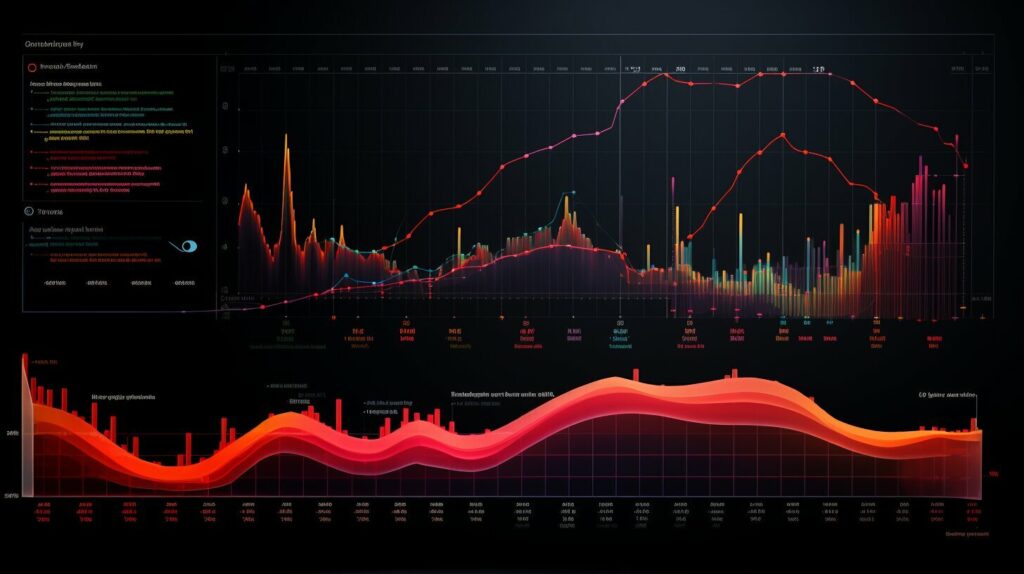
| Trend | Description |
|---|---|
| Internet of Things (IoT) | Enables seamless connection and communication between devices and sensors, enabling real-time data acquisition and analysis. |
| Edge Computing | Brings processing power closer to the data source, reducing latency and enabling faster and more efficient data acquisition. |
| Wireless Communication | Allows for data collection from remote locations without physical connections, providing greater flexibility and scalability. |
| Artificial Intelligence (AI) and Machine Learning (ML) | Enhance data processing capabilities, enabling the extraction of meaningful insights from large volumes of data in real-time. |
| Real-Time Analytics | Enables immediate decision-making and actions based on up-to-date information, empowering organizations to respond quickly to changing conditions. |
Case Studies: Successful Data Acquisition Implementations
Data acquisition has been instrumental in facilitating impactful implementations across various domains, ranging from smart city projects to precision agriculture and industrial automation. These case studies highlight the transformative potential of data acquisition, enabling organizations to streamline operations, optimize resource allocation, and improve decision-making.
Smart City Projects
In the realm of smart cities, data acquisition has played a pivotal role in creating efficient and sustainable urban environments. By harnessing data from sensors, smart city initiatives have successfully implemented real-time monitoring systems for traffic management, waste management, and energy consumption. This data-driven approach enables city authorities to make informed decisions, reduce congestion, improve waste collection, and enhance energy efficiency.
Precision Agriculture
Data acquisition has revolutionized the agricultural sector by enabling precision farming techniques. By collecting data on soil moisture levels, weather conditions, and crop health, farmers can make data-informed decisions to optimize irrigation, fertilization, and pest control. This targeted approach not only enhances crop yields and quality but also minimizes resource wastage and environmental impact. Data acquisition has empowered farmers to maximize productivity while ensuring sustainable agricultural practices.
Industrial Automation
In the realm of industrial automation, data acquisition has transformed manufacturing processes by enabling real-time monitoring and optimization. By collecting data from sensors, machines, and processes, organizations can identify bottlenecks, track production efficiency, and make data-driven improvements. Data acquisition facilitates predictive maintenance, reducing downtime and enhancing overall equipment effectiveness. This data-driven approach optimizes resource allocation, minimizes waste, and improves operational efficiency, leading to increased profitability.
| Smart City Projects | Precision Agriculture | Industrial Automation |
|---|---|---|
| Real-time monitoring for traffic management | Optimized irrigation and fertilization | Enhanced production efficiency |
| Efficient waste management systems | Precise pest control | Predictive maintenance |
| Improved energy consumption | Sustainable farming practices | Reduced downtime |
These case studies exemplify the wide-ranging applications of data acquisition and highlight its potential to drive innovation, efficiency, and sustainability across various industries. By leveraging the power of data acquisition, organizations can unlock valuable insights, optimize processes, and achieve their strategic objectives.

Ethical and Legal Considerations in Data Acquisition
Data acquisition brings with it a multitude of ethical and legal considerations that organizations must address to ensure responsible data practices. These considerations revolve around data governance, compliance, transparency, accountability, privacy rights, and the use of ethical frameworks. By adhering to these principles, businesses can build trust, protect privacy, and promote responsible data acquisition.
Data governance plays a crucial role in regulating the acquisition, storage, and usage of data. It encompasses the policies, processes, and controls that organizations implement to ensure data integrity, confidentiality, and availability. Data governance frameworks provide guidelines for defining data ownership, handling data securely, and establishing clear responsibilities for data acquisition activities.
Compliance with relevant laws and regulations is essential when engaging in data acquisition. Organizations must understand and comply with data protection laws, such as the General Data Protection Regulation (GDPR) in the European Union or the California Consumer Privacy Act (CCPA) in the United States. Compliance ensures that data is collected and processed in a lawful and ethical manner, respecting individuals’ privacy rights and providing them with the necessary transparency and control over their data.
Transparency and accountability are key principles that organizations should uphold throughout the data acquisition process. Transparency entails informing individuals about the purpose, scope, and methods of data collection, as well as how their data will be used. Accountability involves taking responsibility for the proper handling of data, ensuring data accuracy, and promptly addressing any breaches or unauthorized access. By demonstrating transparency and accountability, organizations can maintain trust and foster positive relationships with their stakeholders.
To navigate the complexities of data acquisition, ethical frameworks serve as guiding principles. These frameworks provide a set of values, principles, and practices that organizations can adhere to when making ethical decisions regarding data. Ethical frameworks help organizations consider factors such as fairness, privacy, consent, and the potential impact on individuals and society as a whole. By incorporating ethical considerations into their data acquisition practices, organizations can ensure that their actions align with societal expectations and ethical standards.

Data Acquisition Ethics: Key Considerations
- Respect individuals’ privacy rights and obtain informed consent for data collection.
- Ensure data accuracy, integrity, and confidentiality through proper security measures.
- Minimize data collection and retention to only what is necessary for the intended purpose.
- Establish clear data governance practices and frameworks to guide responsible data acquisition.
- Regularly review and update data protection policies to comply with relevant regulations.
- Provide individuals with transparency about data collection practices and their rights to control their data.
- Implement proper measures to secure data during storage, transmission, and processing.
- Foster a culture of accountability and responsibility for data acquisition practices within the organization.
By adhering to these ethical and legal considerations, organizations can ensure that data acquisition is conducted in an ethical and responsible manner. By doing so, organizations can build trust with their stakeholders, protect privacy rights, and mitigate potential risks associated with data acquisition.
Conclusion
In conclusion, data acquisition software plays a vital role in enabling efficient data collection, which is essential for informed decision-making and gaining competitive advantages. By leveraging the power of data acquisition software, organizations can unlock valuable insights that drive innovation and optimize processes. The efficient capture and analysis of data empowers businesses to make data-driven decisions, enhancing their ability to stay ahead in today’s dynamic marketplace.
Furthermore, data acquisition software offers immense potential for future trends. As emerging technologies continue to evolve, the integration of data acquisition with advancements like the Internet of Things (IoT), edge computing, and artificial intelligence will further enhance its capabilities. Real-time analytics and predictive insights will enable organizations to extract meaningful knowledge from data faster, allowing for proactive decision-making and improved business outcomes.
Embracing data acquisition not only provides organizations with a competitive edge but also lays the foundation for a more sustainable future. By efficiently collecting and harnessing data, businesses can uncover hidden patterns, optimize resource allocation, and drive operational efficiency. Furthermore, data acquisition software helps organizations adapt to changing customer needs and industry trends, positioning them for long-term success in a rapidly evolving digital landscape.